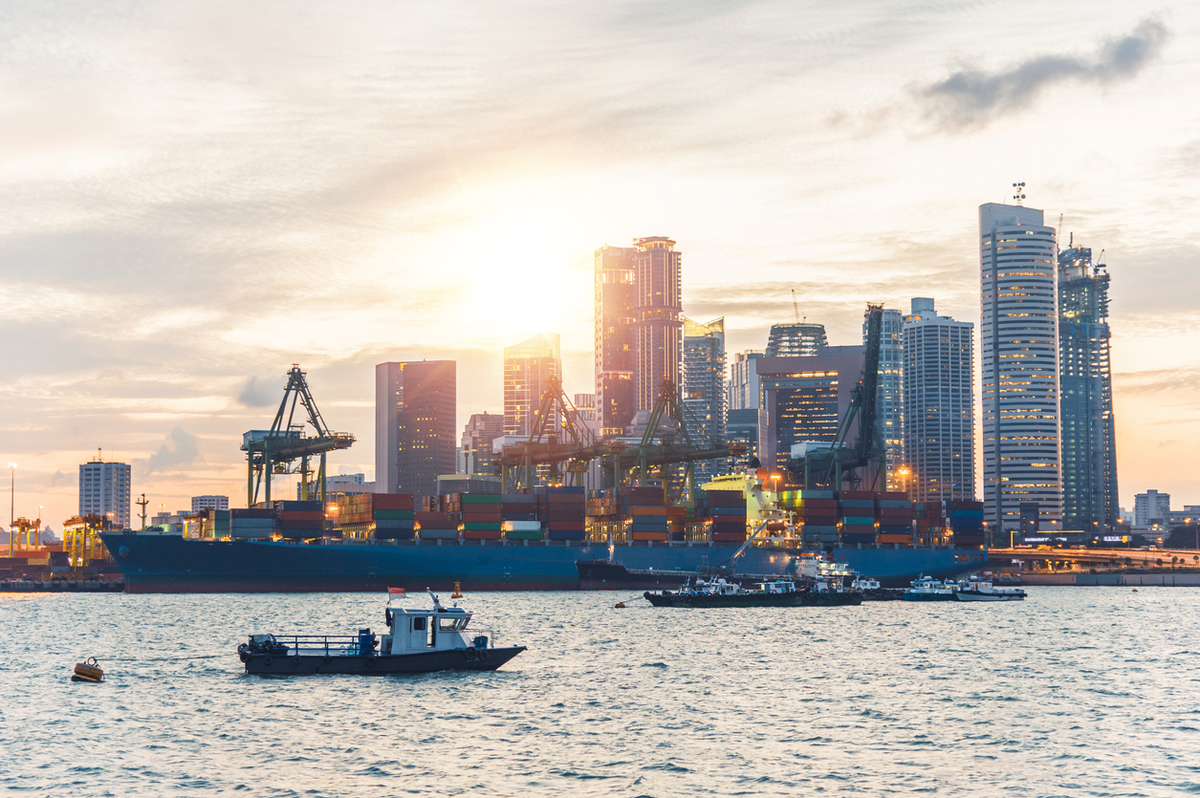Ammonia bunkering study in Singapore could become blueprint for others - DNV
Pilot test runs of ammonia bunkering in Singapore could determine technical standards and safety procedures that can be used as reference points for other ports, DNV says.
 PHOTO: Logistics and transportation of container and cargo ships with a crane in Singapore. Getty Images
PHOTO: Logistics and transportation of container and cargo ships with a crane in Singapore. Getty Images
Representatives from classification society DNV and the Global Centre for Maritime Decarbonisation (GCMD) said collaborative efforts is needed to lift demand for low-carbon fuels.
Boosting infrastructure, financing and availability of low-carbon fuels are key challenges to decarbonising the shipping industry, they told a conference organised by the DNV today.
GCMD is conducting a feasibility study to devise ammonia bunkering safety standards in Singapore.
GCMD’s chief executive Lynn Loo said the project is in the advanced stages and two sites in Singapore have been identified as ideal for ammonia bunkering. Lessons on handling ammonia will be shared with the maritime industry by early next year.
Loo insisted that LNG, either on its own or combined with biofuels as drop-in fuels, will play an important near-term role.
Developing ammonia bunkering in Singapore can be a complex undertaking, considering the port’s proximity to urban areas. If ammonia bunkering can be performed safely in Singapore, it can easily be replicated elsewhere, argued DNV’s Pacific & India regional manager Cristina Saenz de Santa Maria.
To incentivise uptake of ammonia and other fuels with low- and zero-carbon potential, Maria believes an internationally regulated and transparent carbon levy system is the way to go, rather than domestic ones.
Chevron’s Singapore country manager Tat Win Law said the oil major is committed to play key role in these pilot programmes, arguing that partnerships are vital to decarbonise the maritime sector. Policies, partnerships and pilot runs are needed to accelerate decarbonisation in shipping industry, he added.
MISC Group’s chief executive Datuk Yee Yang Chien said it is planning to operate an ammonia-powered tanker by 2025-2026. He thinks that investment and risks must be taken by shipowners, suppliers, engine manufacturers and customers to support uptake of low-carbon fuels.
Datuk says Singapore can make use of its position as a financial hub to attract investments in low-carbon fuels by involving banks.
Last month, the Maritime and Port Authority of Singapore joined a consortium that plans to develop a supply chain and bunkering infrastructure for ammonia in Singapore.
In an initial analysis, the consortium found that ammonia can be sourced from large production facilities under development in Australia.





